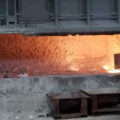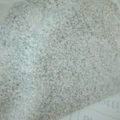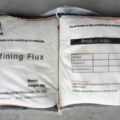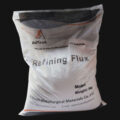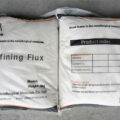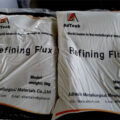The slag removal ability of the aluminum degassing flux is determined by the adsorption and dissolution of the oxidized inclusions in the melt, and the chemical interaction between the flux and the melt. Because oxide inclusions are not wetted by molten aluminum, the interfacial tension between the two is very large. The flux wets the oxide inclusions, and the interfacial tension between the two is relatively small.

After the aluminum casting flux adsorbs the oxidized inclusions in the melt, it can reduce the surface free energy of the system. Therefore, the aluminum degassing flux has the ability to automatically adsorb oxidation inclusions, and we call this ability the refining property of the flux. This adsorption is the main reason for flux slag removal. Obviously, the lower the interfacial tension between the flux and the non-metallic inclusions, and the greater the interfacial tension between the flux and the molten aluminum, the greater the interfacial tension between the molten aluminum and the non-metallic inclusions, the better the adsorption of the flux and the greater the slag removal effect. Strong.
The dissolving effect of the aluminum degassing flux on the oxide is determined by the nature of the flux. Generally, when the molecular structure of the flux is similar to the chemical properties of some oxides, it can be mutually dissolved at a certain temperature. For example, Al2O3 and Na3AlF6 with the same cation have a certain mutual solubility. However, within the normal refining temperature range of aluminum melt, the amount of oxides dissolved in the flux is very small.
The gaseous products of the solvent and the aluminum melt do not dissolve in the aluminum. When bubbles are precipitated on the metal-oxide boundary, they promote the separation of the oxide film from the metal and transfer the oxide film into the flux. At the same time, the bubbles also have floating Select the role of slag removal. In addition, the bubbles formed during the dissociation of the flux can remove some inclusions by flotation.
The degassing effect of the flux is mainly manifested in three aspects: one is to remove part of the complex hydrogen absorbed by the oxidized inclusions with the removal of the complex. The second is that when the flux decomposes or interacts with the melt, it forms a gaseous product for diffusion and hydrogen removal. In addition, since the oxide film on the surface of the melt is dissolved, it becomes easy for the dissolved atomic hydrogen to diffuse into the atmosphere. However, the degassing effect of flux is limited. Under production conditions, its hydrogen content can only be reduced to a level of about 0.2-0.25mL/100g. If the aluminum foundry needs high quality molten aluminum, AdTech offers online degassing unit and CFF filtering unit for further purifying aluminum liquid.




